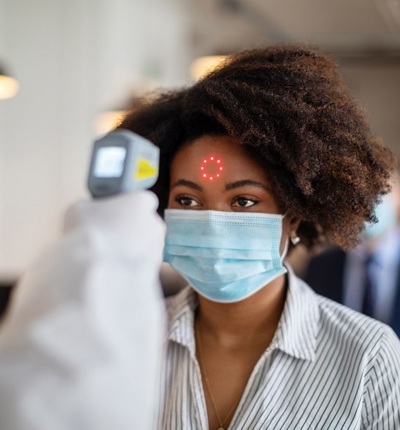
Are workers being sent back too early?
As pictures emerged of commuters crowding back on to public transport on their return to work on May 13, occupational injury lawyer Ross Whalley asks if employees are being sent back too early, before proper Covid-safe precautions can be put in place.
Posted on 13 May 2020
On 10 May, Boris Johnson unveiled his “conditional plan” to reopen society. There was clear intention for those workers, who could not work from home, to return to their workplaces, avoiding public transport where possible.
Mr Johnson said workplaces were to receive guidance on how to become "Covid secure".
Construction and manufacturing were mentioned as specific examples of the sorts of industries where restarting would now be explicitly encouraged to return on Wednesday, 13 May.
But is it really safe for these workers to return yet? What if they cannot avoid commuting by public transport, where 50 workers are known to have died after testing positive for Covid-19 since the start of this year?
Have sufficient health and safety measures been put in place to protect those workers returning from the risk of coronavirus infection?
Are these workers being used as the first group in testing the waters?
As workers return en masse, it is worth considering ONS statistics which have revealed that the highest rates of deaths involving COVID-19 were among low-skilled workers such as male security guards (45.7 deaths per 100,000 men), followed by male taxi drivers and chauffeurs (36.4 deaths per 100,000).
Three in four workers (75%) in occupations requiring frequent contact with people, and exposure to disease, are women. Workers from black and minority ethnic groups are also over-represented in some occupations that require frequent contact with people.
Overall, it is clear that workers in low-paid, manual jobs face a much greater risk of dying from coronavirus than higher-paid, white-collar workers. Men in low-skilled jobs are four times more likely to die from the virus than men in professional occupations, while women working as carers are twice as likely to die as those in professional and technical roles.
Black and ethnic minority (BAME) people are dying at a higher rate than white people. BAME workers are over-represented in high-risk occupations, including transport, health and social care sectors. The plight of BAME workers is that they are more likely to work in frontline services than white workers.
The findings are prompting calls for clear guidance for employers this week as their staff are recalled to the workplace. John Phillips, the acting general secretary of the GMB trade union, said: “Ministers must pause any return to work until proper guidelines, advice and enforcement are in place to keep people safe.”
However, with a sense of inevitability, on the morning of 13 May, the first day of England’s new lockdown rules, Sky News reported images and video clips featuring packed buses, underground carriages and other public transport services.
Contrary to Mr Johnson’s hopes, within hours it has become evident that many workers have no other option for their commute and passengers have found it difficult to keep two metres apart.
The situation is compounded by reduced services as well as threats of strike action. Transport services have come under criticism for failing to enforce social distancing and maximum passenger numbers.
With the easing of the lockdown, a concerning story has emerged about Belly Mujinga, a railway ticket office worker who died after contracting Covid-19 after an incident at work in which she was spat at and assaulted on the concourse of Victoria Station, London.
Both Mrs Mujinga and her colleague fell ill with the virus within days of the incident.
Her cousin Agnes Ntumba indicated that Mrs Mujinga believed she was safe in her usual work environment - the ticket office. "They should not have made her work on the concourse," she said. "She shouldn't have died in this condition. We could have prevented it - if she had more PPE or if they kept her inside instead of being on the concourse."
It was known that Mrs Mujinga had underlying health conditions. TSSA union general secretary Manuel Cortes indicated that there were "serious questions about her death. As a vulnerable person in the 'at-risk' category, and her condition known to her employer, there are questions about why she wasn't stood down from frontline duties early on in this pandemic," Mr Cortes said.
As 0.25% of the working population is believed to now have coronavirus, the guidance for safe working needed to provide extensive detail on how each sector is expected to manage their staff and working environments can be found here.
The documents have been developed in consultation with around 250 businesses, trade unions, the devolved administrations, Public Health England and the Health and Safety Executive (HSE).
The guidance covers eight workplace settings permitted to be open, including construction sites, factories and takeaways, and includes downloadable notices for employers to display to demonstrate they are following official guidance.
There are five main principles:
- Work from home, if possible. Employers should take all reasonable steps to enable people to work from home. But for those employees who cannot and whose workplace has not been told to close, staff should go to work.
- Consult with workers on Covid-19 risk assessments. Employers need to carry out Covid-19 risk assessments in consultation with their workers and trade unions, to establish what guidelines to put in place. Employers with over 50 employees should publish the results of their risk assessments on their website.
- Maintain two metres’ social distancing ‘where possible’. Employers should redesign workspaces to maintain two-metre distances between people by staggering start times, creating one-way systems, opening more entrances and exits, or changing seating layouts.
- Manage transmission risk. Where workers cannot be two metres apart, employers should erect barriers in shared spaces, create shift patterns or fixed teams to minimise interpersonal contact, or ensure workers face away from one another.
- Reinforce cleaning processes. Workplaces should be cleaned more frequently, paying close attention to high-contact objects like door handles, keyboards and lift buttons. Employers should provide handwashing facilities or hand sanitisers at entry and exit points.
Asked whether it is safe for people to go back to work, HSE chief executive Sarah Albon said: “Our view is that every workplace should do a risk assessment, that the vast majority of them should be capable of implementing social distancing and appropriate hygiene and the other best lines of defence set out in the guidance.”
She told Parliament’s Work and Pensions Committee on Tuesday that employers who are unable to do so should “individually not open”.
Sadly, the above new guidance comes too late for the likes of Belly Mujinga and others who have lost their lives through avoidable workplace exposure.
Many accuse the Government of putting the economy before workers' health and safety. It comes as little surprise that flagrant employers will follow suit.
So are workers being sent back too early?
The ONS figures indicate death rates are significantly higher in occupations where physical distancing is difficult, including construction, manufacturing and primary education. And yet, surprisingly these are some of the initial professions being now encouraged to return to work.


